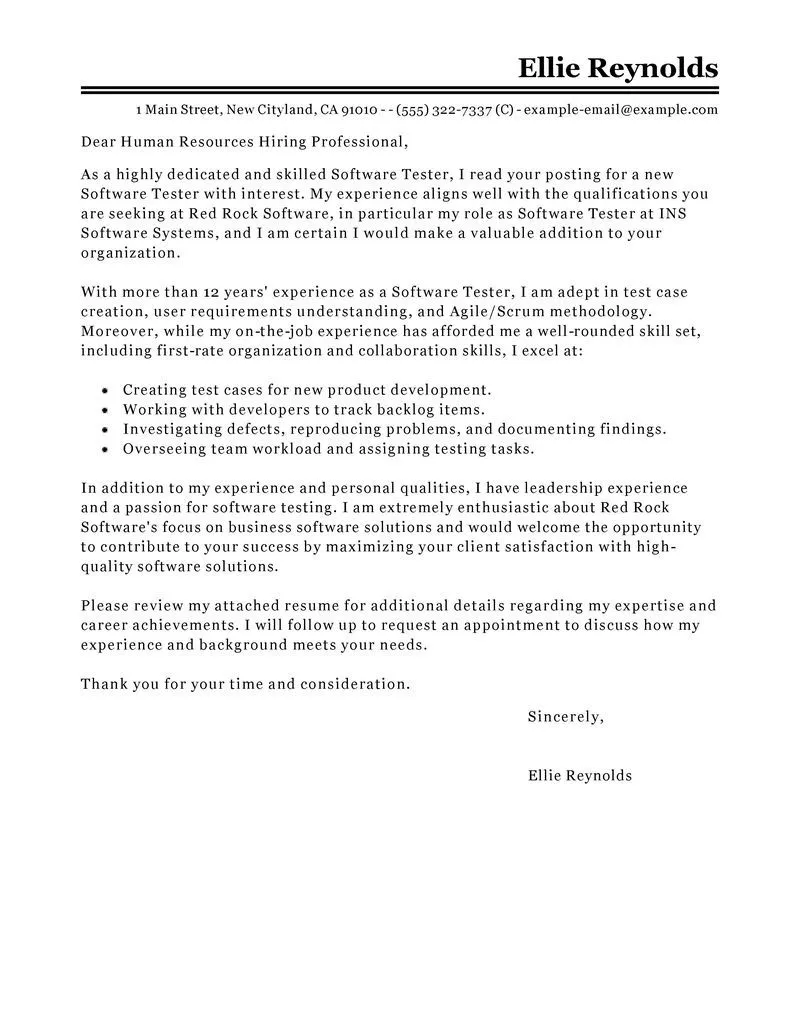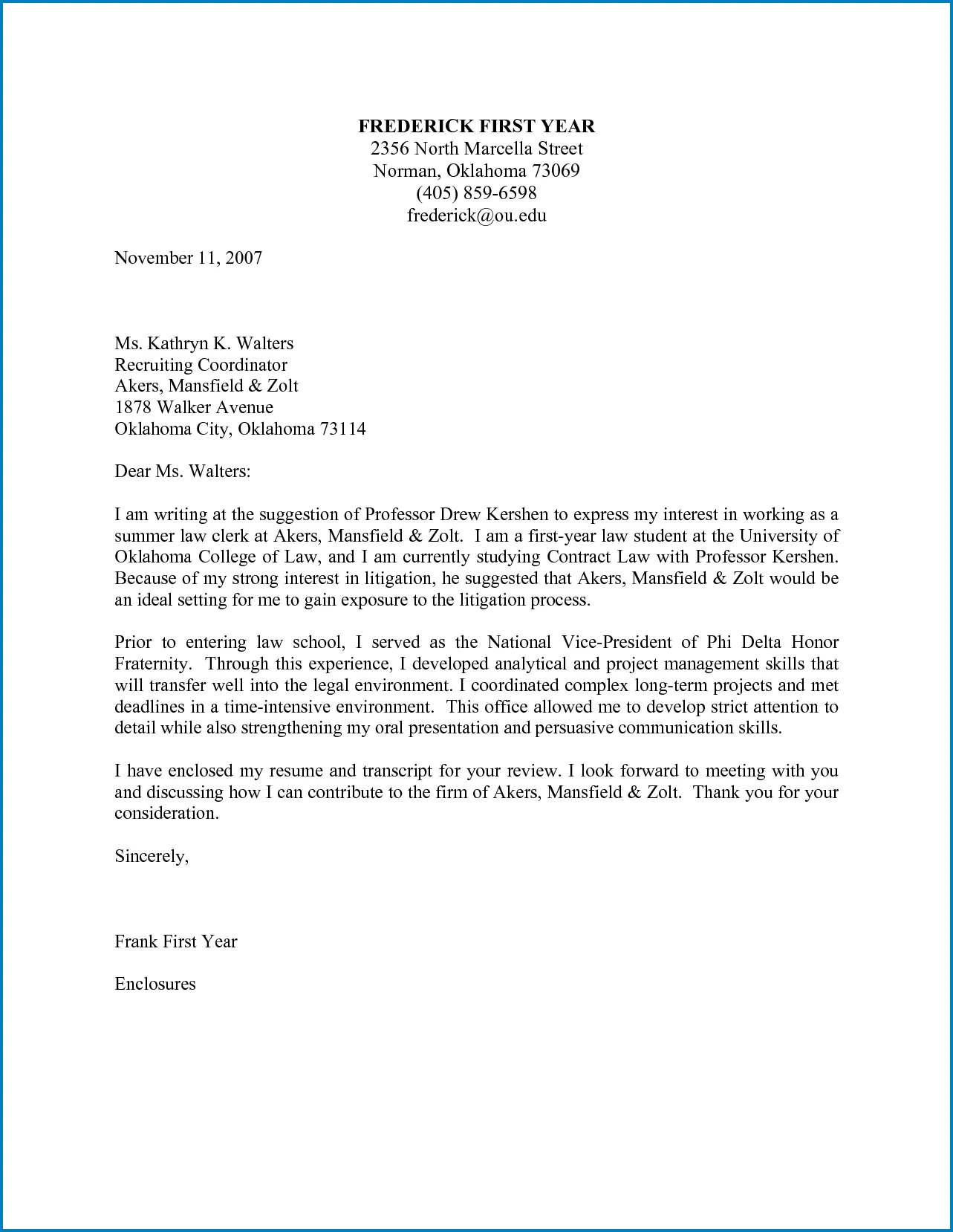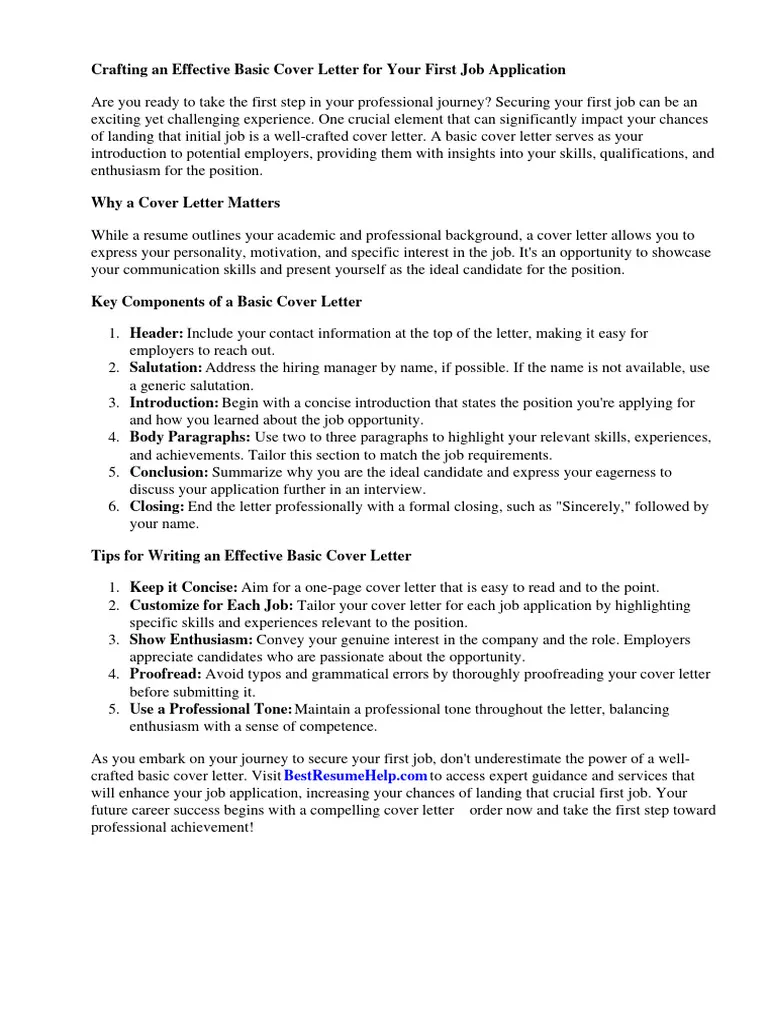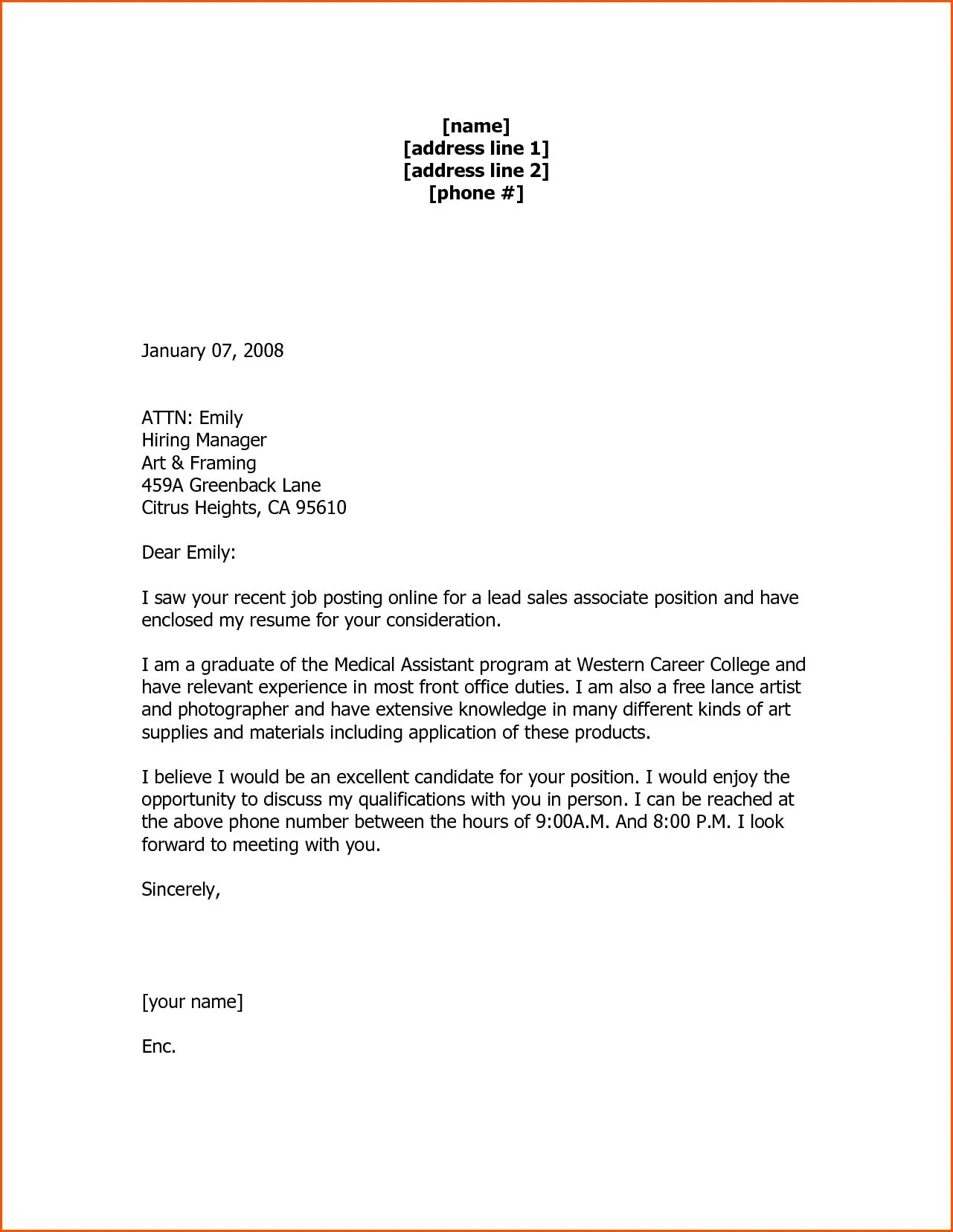Why Your First Job Cover Letter Matters
Landing your first job can feel like navigating a maze, and your cover letter is your map. It’s the first impression you make, and it gives you a chance to showcase your personality and potential beyond what’s listed on your resume. For those with little to no professional experience, the cover letter becomes even more crucial. It’s where you can highlight skills, enthusiasm, and accomplishments that prove you’re the right fit, even without a traditional work history. A well-crafted cover letter can be the difference between getting an interview and getting overlooked. It provides context, tells your story, and demonstrates your unique value. It’s more than just a formality; it’s your opportunity to shine.
Highlighting Skills Without Experience
When you lack professional experience, the focus shifts to your skills. Employers want to see what you can do, not just what you have done. This means highlighting the abilities you’ve developed through academics, extracurricular activities, volunteer work, and even personal projects. The goal is to connect your skills to the job requirements. Carefully review the job description and identify the key skills the employer is seeking. Then, use your cover letter to demonstrate how you’ve acquired and utilized those skills. Be specific, and provide examples of how you’ve put these skills to work in various settings.
Transferable Skills to Showcase

Transferable skills are the secret weapon for entry-level job seekers. These are the skills you’ve honed in one context that can be applied to another. Think of skills like communication, problem-solving, teamwork, time management, and leadership. These are valuable across many industries and roles. If you’ve led a club in school, managed a sports team, or even organized a large family event, these are experiences you can use to illustrate these skills. Provide concise examples to demonstrate how you’ve applied these skills, and quantify your achievements whenever possible. For instance, instead of saying ‘I improved communication skills’, state ‘I improved communication skills by leading a team of five students to successfully complete a project, resulting in a 15% increase in project efficiency’.
Soft Skills that Impress
Soft skills are the personal attributes that enable you to interact effectively with others. They include communication, empathy, adaptability, and a positive attitude. They are highly valued by employers because they significantly impact workplace dynamics. In your cover letter, showcase how you exemplify these qualities. Use specific examples to demonstrate your interpersonal skills. For instance, describe how you resolved a conflict, adapted to a challenging situation, or contributed to a team’s success. Show how you approach challenges with a positive attitude and eagerness to learn. Remember to align your soft skills with the company culture and the specific requirements of the job. Employers often prioritize candidates who possess a strong work ethic and the ability to collaborate effectively.
Formatting Your Cover Letter for Impact
A well-formatted cover letter is essential for making a positive first impression. Proper formatting is not merely about aesthetics; it’s about readability and professionalism. A cluttered or poorly organized letter can lead to the reader losing interest. Your goal is to make it easy for the hiring manager to quickly grasp your key qualifications and see why you’re a great fit. The layout, font, and overall design should be clean and uncluttered. Aim for a professional look, which indicates your attention to detail and respect for the reader’s time. Using a clear, easy-to-read font, such as Arial or Times New Roman, is advisable, alongside a consistent font size and spacing throughout the document.
Contact Information & Salutation

Start your cover letter with your contact information. Include your full name, phone number, email address, and optionally, your LinkedIn profile URL. Ensure that the information is accurate and up-to-date. Then, always address the hiring manager by name. Research the company to find the name of the hiring manager. If you can’t find a name, use a professional greeting, such as “Dear Hiring Manager” or “Dear [Department] Team.” Avoid generic greetings like “To Whom It May Concern.” Addressing the letter to a specific person shows that you have taken the initiative to research the company and its hiring practices, which indicates enthusiasm and genuine interest in the opportunity.
Crafting a Compelling Opening Paragraph
Your opening paragraph is your first and perhaps only chance to grab the reader’s attention. Make it count. Start with a concise statement that clearly states the position you’re applying for and where you saw the job posting. Immediately follow this with a brief, compelling statement that highlights your enthusiasm for the role and company. Briefly mention one or two key skills or experiences that make you a strong fit. The goal is to hook the reader’s interest and make them want to read more. Avoid generic openings. Instead of starting with “I am writing to apply…”, try something more dynamic. For instance, “I am incredibly excited to apply for the Marketing Assistant position at [Company Name], as I have always admired [Company’s] innovative approach to…”.
The Body Paragraphs Showcasing Your Value
The body of your cover letter is where you build your case. This is where you provide evidence that you have the skills and qualifications the employer seeks. Each paragraph should focus on a specific aspect of your qualifications, directly linking them to the requirements outlined in the job description. Provide specific examples of your experiences. Use the STAR method (Situation, Task, Action, Result) to structure your examples, especially if you lack direct work experience. For example, describe a situation, the task you faced, the actions you took, and the positive results you achieved. Remember to tailor the content to each specific job application, showcasing the most relevant skills and experiences. Aim for clear, concise language.
Emphasizing Achievements & Education

Focus on achievements rather than just listing responsibilities. Quantify your accomplishments whenever possible to demonstrate the impact of your actions. Use numbers and data to illustrate your successes. For instance, instead of saying ‘Improved customer service’, state ‘Improved customer satisfaction scores by 15% through implementing a new feedback system.’ For recent graduates, education is a significant asset. Highlight relevant coursework, projects, and any academic achievements that are pertinent to the job. Mention any honors, awards, or special recognitions you received. Frame your education in terms of the skills and knowledge you gained that make you a strong candidate. Show how your academic background has prepared you for the challenges of the role.
Quantifying Accomplishments & Skills
Numbers speak louder than words. When you can quantify your skills and accomplishments, you make a stronger case. Instead of saying ‘Managed social media accounts’, say ‘Managed social media accounts, resulting in a 20% increase in follower engagement.’ If you volunteered, specify the hours you dedicated. If you completed a project, mention the results. For example, ‘Led a team of five to complete a project on time and under budget’. Numbers provide concrete evidence of your capabilities and the value you can bring to the company. They allow employers to easily measure your impact and see the positive results you are able to achieve. Always use data to support your claims and demonstrate your aptitude and efficiency.
The Closing & Call to Action
Your closing paragraph should reiterate your interest in the position and summarize why you are a good fit. Reiterate your enthusiasm for the opportunity and briefly mention a key skill or experience that makes you stand out. End with a clear call to action, such as ‘I am eager to discuss how my skills can contribute to [Company’s] success. Thank you for your time and consideration. I look forward to hearing from you soon.’ Proofread the entire letter to ensure there are no grammatical errors or typos. Using a professional closing, such as ‘Sincerely’ or ‘Best regards’, is also good practice. Ensure all elements of your letter work together to make a strong, lasting impression. A well-crafted closing leaves the reader with a positive and memorable image of you.
Proofreading & Editing for Perfection

Proofreading and editing are non-negotiable steps in writing a cover letter. Before submitting, meticulously review your cover letter for any errors in grammar, spelling, punctuation, and formatting. A polished letter demonstrates attention to detail and professionalism, and any mistakes can undermine your credibility. Read the letter aloud, or have someone else review it. Use grammar and spell check tools, but don’t rely on them completely. They may miss subtle errors. Ensure the language is clear, concise, and easy to understand. Check that the formatting is consistent throughout the document. Consider using a fresh pair of eyes to catch any errors you might have missed. Proofreading is the final opportunity to ensure your letter represents you in the best possible light.
Common Mistakes to Avoid
Certain errors can significantly diminish the impact of your cover letter. Avoiding these common pitfalls can make your application stand out. A poorly written letter may not even be considered. Proofread carefully to ensure your letter is free of errors. Overlooking these mistakes often results in a negative first impression. Pay attention to detail to create a polished, professional application. Take your time and review your letter to make sure it is free of common mistakes.
Overused Phrases and Clichés
Avoid clichés that weaken your writing. Replace phrases that are overused and generic with fresh, impactful alternatives. Phrases like “I am writing to apply…”, “hard worker”, and “team player” are commonplace and lack originality. They do not provide the reader with any real insight into your skills or abilities. Instead, use specific examples and demonstrate your skills. Show the reader what makes you unique. Focus on providing concrete evidence of your capabilities and what you have accomplished. Use strong verbs and concise sentences to showcase your personality and enthusiasm. These phrases often make your writing bland and can make your application appear generic.
Grammar and Spelling Errors

Typos and grammatical errors are a major turnoff. These mistakes give the impression that you lack attention to detail. Proofread meticulously to catch any errors. Double-check the spelling of the hiring manager’s name and the company name. Using grammar and spell check tools is important, but don’t rely on them entirely. Always read through the cover letter yourself. Ask someone else to review your letter. A fresh pair of eyes can often catch errors you’ve missed. Make sure the punctuation is correct. Ensuring your writing is polished and error-free shows respect for the reader and helps you make a positive impression.
Tailoring Your Cover Letter
Generic cover letters are a missed opportunity. Tailoring your letter to each job application is crucial. This demonstrates that you have taken the time to understand the job requirements and the company’s needs. It also significantly increases your chances of getting an interview. Avoid using the same cover letter for multiple applications. The more effort you put into tailoring your letter, the more likely you are to get noticed. The key to a good cover letter is to demonstrate you understand the role. Companies look for candidates that are interested in their business. This can be the edge you need to stand out amongst the competition. Tailor the letter to reflect your interest.
Researching the Company
Before writing, research the company. Visit their website, read their “About Us” page, and explore their social media profiles. Understanding the company’s mission, values, culture, and recent news can help you customize your letter. Identify the company’s priorities and align your skills and experiences. Doing this demonstrates that you’re genuinely interested in the company. Show how your skills and experience align with the company’s needs. Mention specific projects, initiatives, or values that resonate with you. This level of detail shows the hiring manager that you have done your homework. The hiring manager will appreciate you’ve taken the time to learn about their organization and will be more inclined to read your cover letter.
Customizing for Each Application

Once you have a good understanding of the company, customize the cover letter for each application. Review the job description carefully and highlight the skills and experiences that are most relevant. Use keywords from the job description. Show the hiring manager that you have the specific qualifications they’re looking for. This shows that you have carefully reviewed the job posting and are a good fit. Tailor your language and tone to match the company culture. If the company has a formal culture, your letter should be professional and polished. If it’s more casual, you can use a more friendly tone. Tailoring your cover letter will significantly increase your chances of getting an interview.
Showcasing Enthusiasm & Fit
The most important aspect of a cover letter is to showcase your enthusiasm. Express your excitement about the opportunity and the company. Demonstrate how your skills, experiences, and values align with the company’s. The goal is to convey genuine interest. Mention specific reasons why you are interested in the role and what appeals to you about the company. Demonstrate how your aspirations align with the job requirements. Illustrate how your skills will benefit the company. Express your excitement about the opportunity and the company. When you’re enthusiastic, it shows that you genuinely care about the role. This energy can often be the deciding factor.
